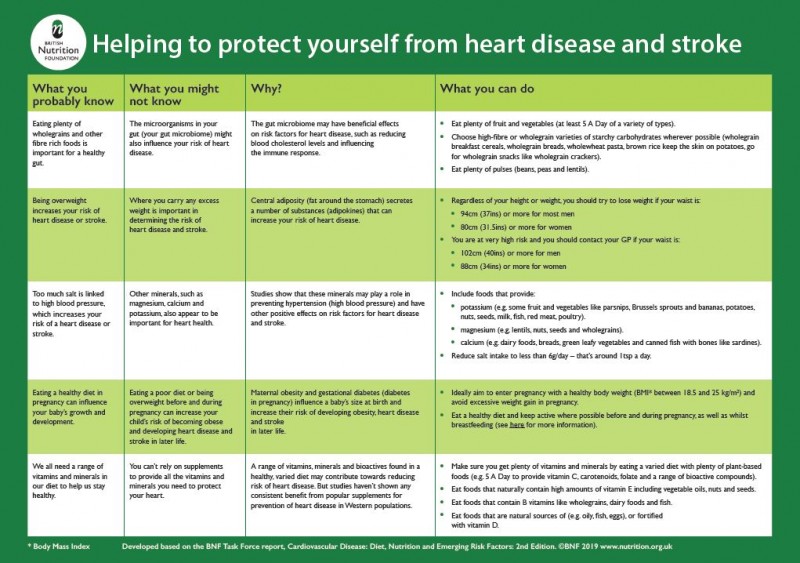
Health and Lifestyles is a representative study of the British public. The survey aims to assess the health of the population and their exercise and diet habits. The survey was conducted between May and June 2009, and its findings are widely reported. The data are used to determine the most effective health-care programs. A large proportion of the population, about half of whom are aged over 40, took part in the study. Participation in the Health and Lifestyles Study has many benefits.
It is the first large-scale study of British health and lifestyles. The survey revealed that many factors influence a person's life, including their physical fitness, psychological state, life circumstances, health-related behavior, and even their mental health. This study examines the social and psychological contexts of individuals and helps to identify patterns in health-related behaviour. It provides valuable insights into factors that impact health and lifestyles. It aids in understanding the causes of most common diseases, and even how to prevent them.

Researchers who study lifestyle and health have to deal with two major issues. The first concern is how to measure the effect of healthy lifestyles on a community. Second, current analytic methods are far behind theoretical developments. Some studies use cluster or factor analysis but fail to test the causal hypotheses. However, they provide a more complete picture than many other studies. A more detailed understanding of the relationship between health and lifestyles can help policymakers improve policies and promote healthy living.
Health and lifestyles research focuses on the differences between groups. Children in the "safety problem" class scored significantly less than those who were in the "consistently optimistic" class. Hypothetical child from the "safety problems" class scored at or above all outcomes. The results showed people with lower social status and those from higher socioeconomic backgrounds had healthier lifestyles that the rest.
Multiple studies have shown that the correlation between a healthy lifestyle with psychosomatic symptoms differs by gender and country. People with lower symptoms tend to be healthier if they live a healthy lifestyle. For example, boys in Ireland and Greece showed greater reductions in their symptoms when they lived a healthy lifestyle. These findings are essential for determining how to improve children's lives. The study also points to the importance of maintaining a balanced lifestyle in terms of nutrition and exercise.

The relationship between psychosomatic symptoms and a healthy lifestyle is complex. It is dependent on the country and the sex of the person. The symptoms tend to be lower if a person has a healthier lifestyle. A healthy lifestyle is associated with fewer psychosomatic symptoms in boys who live in countries that have a healthier lifestyle. It varies from one country to another. This study shows the importance of exercise for long-term quality of life.
FAQ
What is the difference between a calorie or a kilocalorie.
Calories measure the energy content of food. Calories are a unit of measurement. One calorie is equal to one degree Celsius in energy.
Kilocalories is another name for calories. Kilocalories can be measured in thousandsths of one calorie. 1000 calories equals 1 kilocalorie.
How do I count calories?
You might be asking "What is the best diet?" or "is counting calories necessary?" The answer to this question depends on many factors, including your current health, your personal goals and preferences, as well as your overall lifestyle.
The Best Diet for me - Which One Is Right for You?
My current health, my personal goals and lifestyle will determine the best diet for me. There are many diets available, some good and others not so good. Some are better for certain people than others. So what should I do? How can I make the right choice?
These are the questions this article will answer. This article begins with a brief overview of the various types of diets that are available today. Then, the pros and cons of each type of diet are discussed. We'll then discuss how to choose which one is best for you.
Let's begin by briefly reviewing the different types and diets.
Diet Types
There are three types of diets available: ketogenic, high-protein, and low fat. Let's take a look at them all below.
Low Fat Diets
A low fat diet is a diet that restricts the amount of fats consumed. This is achieved through reducing intakes of saturated fats (butter and cream cheese, for example). These fats can be replaced with unsaturated fats like avocados and olive oil. If you want to lose weight fast and easily, then a low fat diet is often recommended. This diet can cause problems such constipation as heartburn, indigestion, and even stomach pain. It can also lead to vitamin deficiencies, if someone doesn't get enough vitamins in their food.
High Protein Diets
High protein diets are known to restrict carbohydrate intake and promote the consumption of proteins. These diets typically have more protein than other diets. These diets are intended to increase muscle mass and reduce calories. Unfortunately, they can't provide adequate nutrition for those who eat regularly. They may also be too restrictive and not suitable for everyone.
Ketogenic Diets
The keto diet is also known as the keto diet. They are high-fat and low in carbs and protein. Athletes and bodybuilders use them because they allow them more time and harder training without feeling fatigued. However, they must be used with caution to avoid nausea, headaches and fatigue.
What should my diet consist of?
You should eat lots of vegetables and fruits. They are rich in vitamins that can strengthen your immune system. Fruits and veggies are also high in fiber, which makes them filling and helps with digestion. At least five servings of fruits and vegetables should be consumed each day.
Drink plenty of water. Water flushes toxins from your body and helps you feel full between meals. Drink about eight glasses each day.
Choose whole grains over refined grains. Whole grains retain all nutrients including B vitamins, iron and zinc as well as calcium, magnesium, calcium, protein, and magnesium. Some nutrients have been removed from refined grains.
Avoid sugary drinks. Sugary drinks are high in empty calories and can lead to obesity. Instead, opt for water, milk, or unsweetened tea.
Avoid fast food. Fast food has very little nutritional value. While it might taste good, it won't give your body the energy it needs to function properly. Choose healthier options like salads, soups and sandwiches as well as pasta dishes.
Limit your alcohol intake. You can reduce your intake of alcohol by limiting the amount of empty calories. Limit yourself to no more than two alcoholic beverages a week.
Try to cut down on red meat. Red meats can be high in cholesterol and saturated fat. Instead, choose lean cuts of beef and pork, lamb, chicken or fish.
Statistics
- In both adults and children, the intake of free sugars should be reduced to less than 10% of total energy intake. (who.int)
- According to the 2020 Dietary Guidelines for Americans, a balanced diet high in fruits and vegetables, lean protein, low-fat dairy and whole grains is needed for optimal energy. (mayoclinichealthsystem.org)
- nutrients.[17]X Research sourceWhole grains to try include: 100% whole wheat pasta and bread, brown rice, whole grain oats, farro, millet, quinoa, and barley. (wikihow.com)
- WHO recommends reducing saturated fats to less than 10% of total energy intake; reducing trans-fats to less than 1% of total energy intake; and replacing both saturated fats and trans-fats to unsaturated fats. (who.int)
External Links
How To
How to Live A Healthy Lifestyle
A healthy lifestyle is one in which you are able maintain your weight and health. This lifestyle includes healthy eating habits, regular exercise, adequate sleep, and abstaining from drugs, alcohol, caffeine, tobacco and other harmful substances. A healthy lifestyle will help you feel great and stay in shape. Healthy lifestyles can also reduce the risk of chronic diseases, such as stroke, heart disease, diabetes, cancer, osteoporosis and arthritis.
This project had the main objective of providing a step-by–step guide to living a healthier lifestyle. The introduction of the project was the first. This describes what a healthy lifestyle looks like, why it is important, and who it is. Next, I wrote the body paragraphs. These include tips and tricks for maintaining a healthy lifestyle. Finally, I wrote the conclusion. This summarizes the entire article, and provides additional resources, if needed.
This assignment taught me how to write a concise paragraph. Also, I learned how to organize my ideas into topic sentences and supporting details. Moreover, I improved my research skills because I had to find specific sources and cite them properly. I learned proper grammar to write.